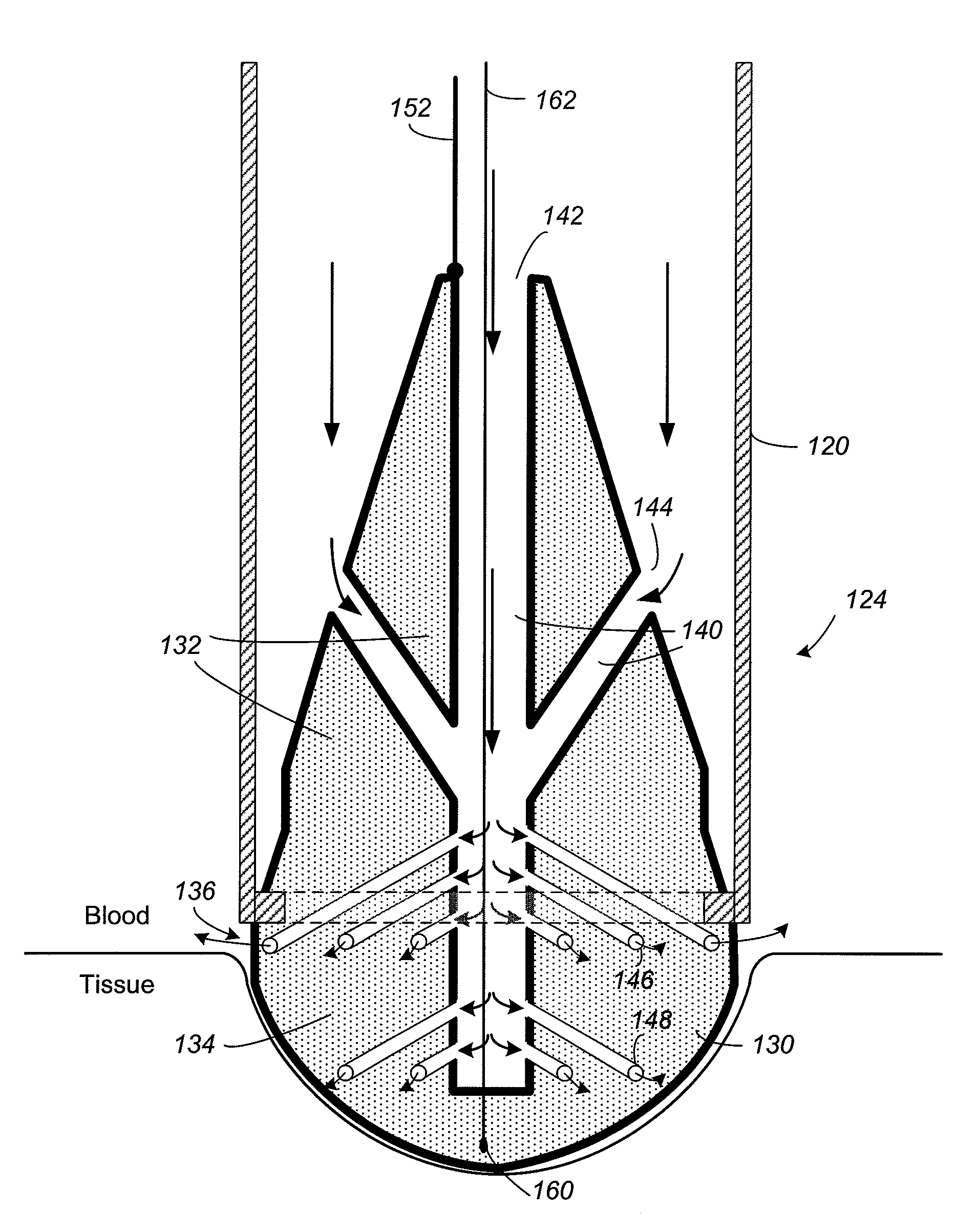Catheter and Method for Improved Ablation
- Summary
- Abstract
- Description
- Claims
- Application Information
AI Technical Summary
Benefits of technology
Problems solved by technology
Method used
Image
Examples
Embodiment Construction
[0049]FIG. 1 illustrates schematically a typical application of catheter ablation to pathological tissues inside a heart chamber. Particularly, FIG. 1 shows a front elevational view of a human heart 10 in partial cross-section. In an example of operation, a catheter 20 is percutaneously introduced into a patient and directed through a blood vessel (not shown) and into the aorta 19, as best seen in FIG. 1. The catheter has a distal end 30 positioned within, for example, the left ventricle 12, although it could as easily be placed within the right ventricle 14 or any other endocardial chamber such as the left atrium 16 or the right atrium 18 or another site.
[0050]The catheter 20 has one or more electrodes. It first operates in a mapping mode in which electrical signals in the endocardium are detected by the electrodes. As disclosed in U.S. Pat. No. 6,522,905, the entire disclosure of which is incorporated herein by reference, the mapping operation allows the catheter to locate the pro...
PUM
 Login to View More
Login to View More Abstract
Description
Claims
Application Information
 Login to View More
Login to View More - R&D
- Intellectual Property
- Life Sciences
- Materials
- Tech Scout
- Unparalleled Data Quality
- Higher Quality Content
- 60% Fewer Hallucinations
Browse by: Latest US Patents, China's latest patents, Technical Efficacy Thesaurus, Application Domain, Technology Topic, Popular Technical Reports.
© 2025 PatSnap. All rights reserved.Legal|Privacy policy|Modern Slavery Act Transparency Statement|Sitemap|About US| Contact US: help@patsnap.com



